No products in the cart.
News
Silk Comes from Cocoons. I Find Them Fascinating
Many know that I’ve travelled a lot looking at interesting textiles and all things textile related. I’ve brought home many things that interest me. The other day a friend came to my studio for some kibiso silk for her artwork and then came back again for a cocoon. When I got out my cocoons I found a lot of things I’d brought home from China, Japan, Uzbekistan, and India and ?? This post is the first one about cocoons. Note: I’ll be selling my collection of textiles in San Francisco in November. Stay tuned.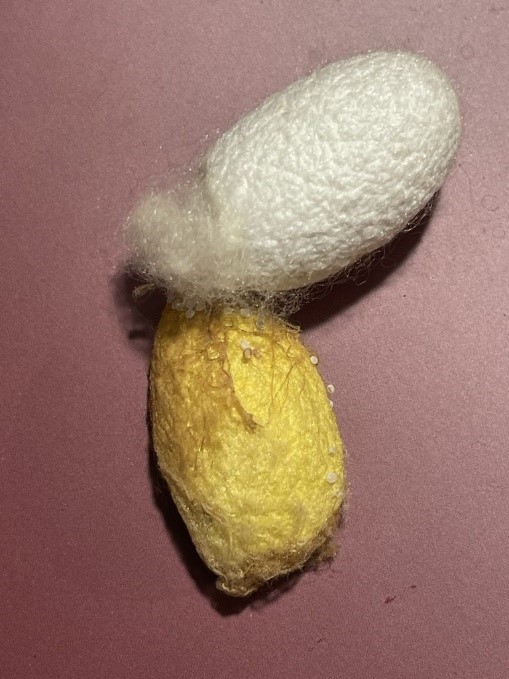
We visited a silk growing place in Japan where they raised at least two different varieties of silkworms. There was a video showing how they saved some males and females for breeding. They showed putting a pair of moths under a domed basket where they bred then I think the eggs came and the moths died. These two cocoons made two different silks.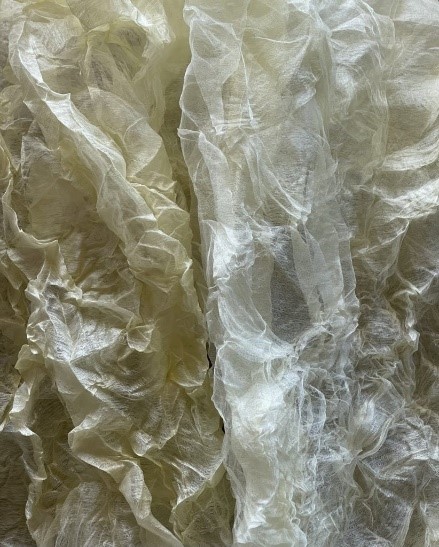
This scarf is made of two layers. Each layer was made from silk from a different variety. One layer is pure white and the other is yellow-ish.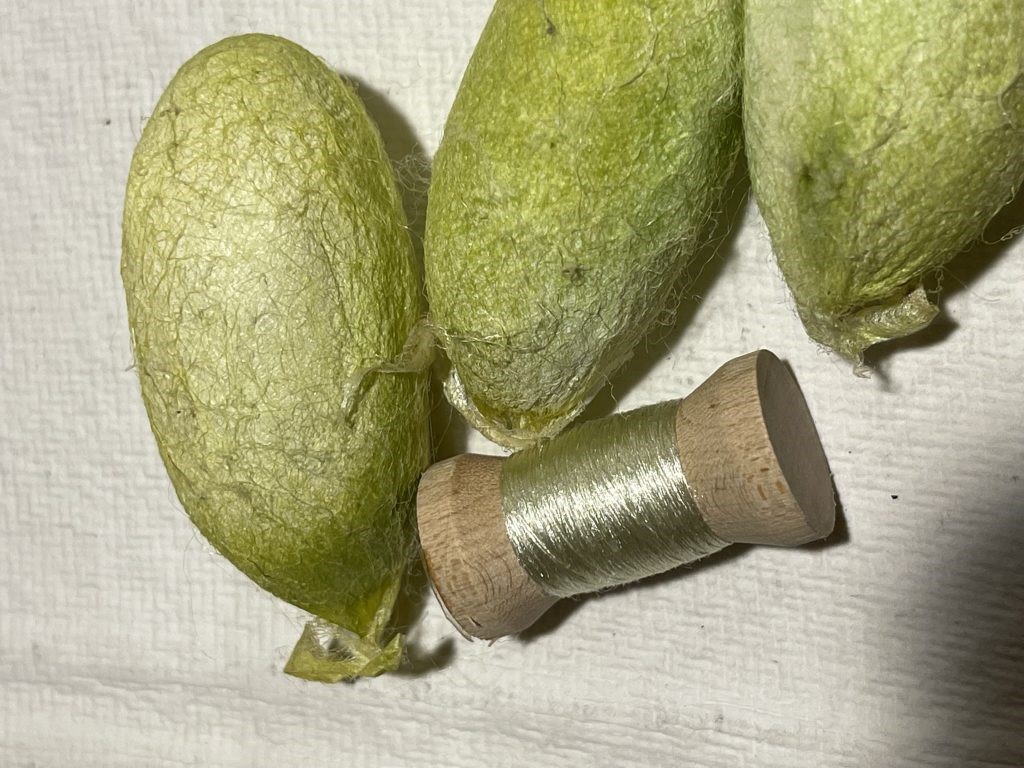
These cocoons made the thread on the spool. The silk filaments were reeled off as the cocoons were unwound. The silk threads in the scarf above were unwound (reeled off) from the cocoons. The scarf is stiff which tells us the sericin has not been removed and is called raw silk.
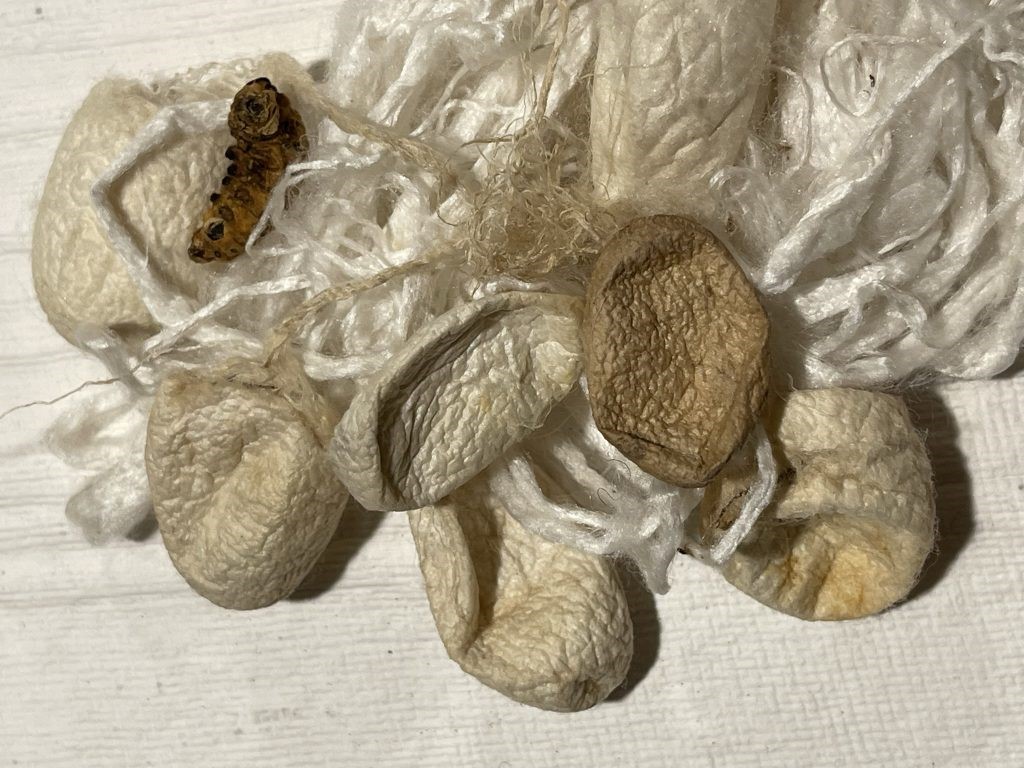
In the case of the breeding cocoons, the “bug” (pupa) inside the cocoon develops into an adult that breaks out of the cocoon as a moth. Since the cocoon is broken, the fiber cannot be reeled off. These spent cocoons were in a wastebasket in a mill where they were reeling off the silk. I helped myself to see what the cocoons looked like and was pleased to find one pupa. (The word chrysalis is the same stage as pupa but only refers to butterflies).
These cocoons were purposely cut open so that silk fiber cannot be reeled and must be spun. It means the moth can exit the cocoon on its own without being killed. However my understanding is that the moth soon dies a natural death.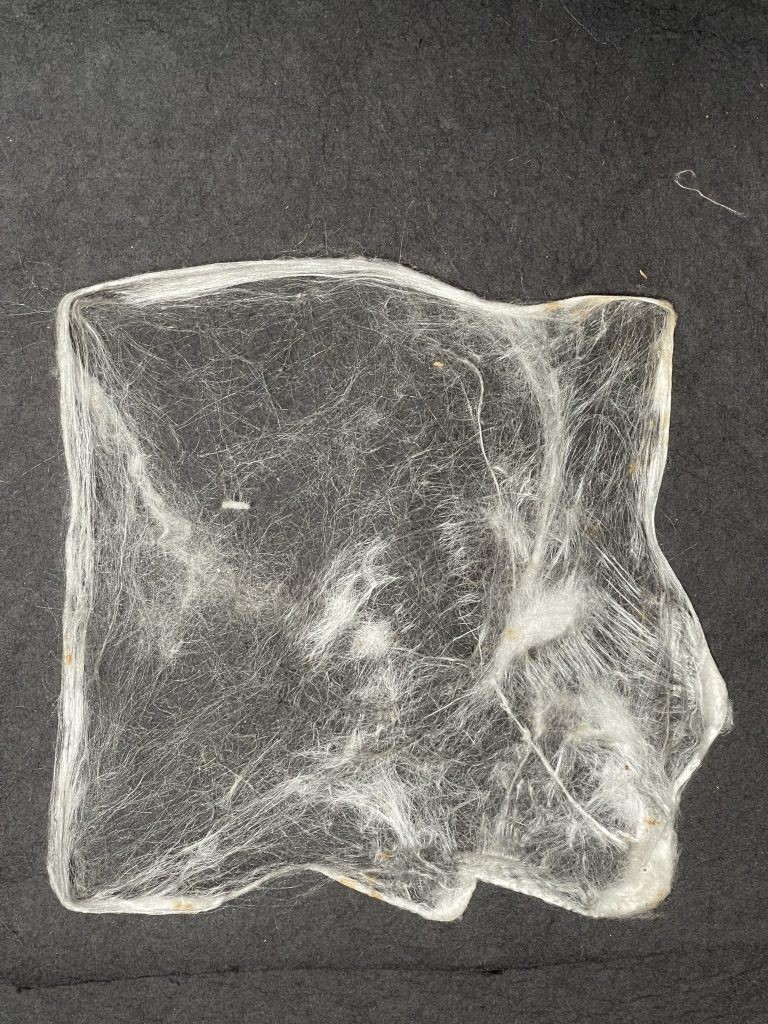
On a silk growers farm in Japan we made hankies like these in preparation for spinning. The cocoons had been degummed, were wet, and had been cut open. We put our thumbs in the hole and worked with forefingers and thumbs from both hands to pinch and spread out the cocoons into flat pieces like these. We draped them over a dome and piled up a certain number (maybe 12?) together, then removed them for spinning. These were called caps. If they were flat they would be called mawata.
Here are silk hankies on a small frame with several layers. I’m finding there are lots of ways to spin silk in the book “A Silk Workers Notebook” by Cheryl Kolander. Apparently, each method produces a very different type of thread.
Safimex company has supplying Silkworm cocoon with a good price for bulk oder. If you are interested in this product, please feel free to contact us at info@safimex.com or click at https://www.alibaba.com/product-detail/RAW-SILKWORM-COCOON-FOR-FACE-CLEANING_11000012944410.html?spm=a2747.product_manager.0.0.257f2c3cX73YrM
Source: Peggy Osterkamp’s Weaving
SAFIMEX JOINT STOCK COMPANY
Head Office: 216/20a Duong Ba Trac Street, Ward 2, District 8, Hochiminh City, Vietnam.
Tel: (+84)-(28)-3636 2388 | (+84)-(28)-3636 2399| Web: Www.Safimex.Com
